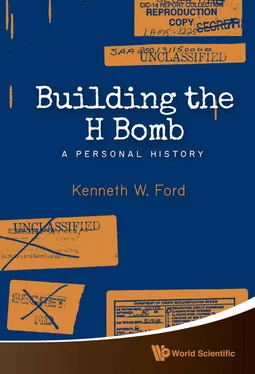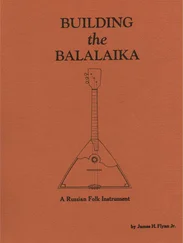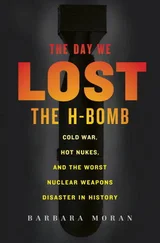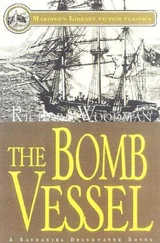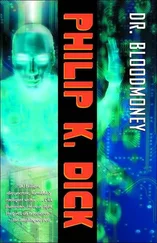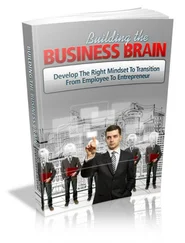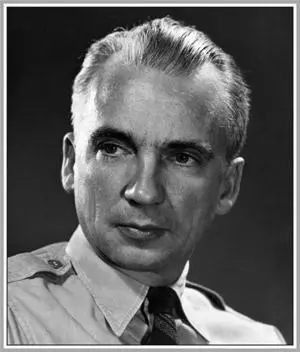
Norris Bradbury, 1950.
Los Alamos National Laboratory, courtesy of AIP Emilio Segrè Visual Archives.
Stan Ulam’s wife, Francoise, was more forthright in her discussion of the Ulam-Teller idea. Here is an excerpt from an epilogue to Stan’s memoirs, which she wrote after his death: {11}
The technical and political debates were raging when Stan, mulling over the problems, suddenly came upon a totally new and intriguing approach. Engraved on my memory is the day when I found him at noon [13]staring intensely out of a window in our living room with a very strange expression on his face. Peering unseeing into the garden, he said: “I found a way to make it work.” “What work?” I asked. “The Super,” he replied. “It is a totally different scheme, and it will change to course of history.”
I, who had rejoiced that the “Super” had not seemed feasible, was appalled by this news, and anxiously asked what he intended to do. He replied that he “would have to tell Edward.” Fearing that Teller might pounce on him again, I ventured that maybe he ought to test his idea on Mark or Bradbury first. He did, but went to Teller the next day just the same.
As time passed, Teller’s claims about the timing of the invention of radiation implosion—and his personal role in it—became less credible, and the “work of many people” became largely the work of one person. Here is some of what he had to say in a 1979 interview with Jay Keyworth. {12} , [14]
On January 15, 1951, which happened to be my birthday, when that meeting [with Bradbury and others] ended with agreement on how to do the testing [at Greenhouse] I said to Bradbury and now I want to go ahead with the next one, and Bradbury said it was too late, there is no point until after the test. I found this rather outrageous. The more so because by that time I knew how to solve the problem. I cannot tell you when I knew it, I think it was in December 1950. It was not long before that January meeting and I also know very accurately why I did not understand all this much sooner.
…
All this was clear to me. I don’t know whether all of it was before the 15th of January. I believe so. And I believe that very shortly after that event I also told the new story to Johnny von Neumann.
If Teller had these insights before mid-February 1951, he failed to share them with those of us who were working with him on thermonuclear weapons at Los Alamos. In his 2001 Memoirs, he moves the date of discovery back definitively to a time before Christmas 1950. {13}
That was my state of mind on an afternoon in late November or early December [1950] when Carson Mark stuck his head into my office [to inform Teller about a visiting Admiral who responded to information about the dim outlook for the Super by saying, in effect, “Damn the torpedoes; full speed ahead”]… Carson Mark made it a practice to needle me in a subtle manner… the flood of adrenaline he engendered in me had real repercussions.
I began to review every idea that had gone into planning for a hydrogen bomb, looking furiously for a mistake or a new idea.
…
Within an hour of Carson’s derisive remarks, I knew how to move ahead—avoiding the torpedoes. Thus, almost at once, the new plan appeared to be ready.
…
I first went to see Johnny von Neumann, who agreed that the equilibrium approach seemed very promising. I also went over the plan with Freddie de Hoffmann, who was enthusiastic. But Darol Froman, who was then head of the Family Committee, would not really listen.
…
The impossibility of a serious general discussion created a sense of unreality. That feeling grew even stronger when, around Christmas, I went to an American Physical Society meeting in Pasadena [actually in Los Angeles at UCLA].
…
[After a talk by Lee DuBridge, president of Caltech and former president of the American Physical Society] I went up to DuBridge and tried to explain to him that some interesting and important work was going on at Los Alamos. He would not listen.
John Wheeler, John Toll, and I were with Teller at that December 1950 meeting. Had he shared with us at that time any thoughts on the equilibrium Super, I believe I would remember.
In his Memoirs Teller goes on to describe the meeting of January 15, 1951 in Los Alamos, in which Bradbury “refused me permission again!” to “get on with the new work.” {14} He then goes on to describe his mid-February meeting with Ulam:
Not long after my visit to Nevada [late January or early February 1951], Stan Ulam came to my office. He announced that he had an idea: Use a fission explosion to compress the deuterium, and it would burn. His suggestion was far from original: Compression had been suggested by various people on innumerable occasions in the past. But this was the first time that I did not object to it. Stan then proceeded to describe how an atomic explosive should compress several enclosures of deuterium through hydrodynamic shock. His statement excluded my realization of why compression was important, and it also included details that were impractical.
I told him that I had thought of something that might work even better: It would be much more effective to compress the deuterium with the help of radiation… But Stan was not interested in my proposal and refused to listen.
Finally, to put an end to the discussion, I told him that I would write up both proposals, and we would sign it as a joint report. I have no idea whether Stan ever considered the extent to which compression would or would not help. But, having considered it so many times in the past, I never imagined that our joint report would be the first to discuss seriously the possibility of compression.
In that paper, I wrote down my new plan for the first time. I explained how it would work and why it was better to compress the deuterium through radiation.
On February 24, 1995, I interviewed Carson Mark at his home in Los Alamos. {15} He was 81 at the time, and not in the best of health (he died two years later) but he was as feisty and as free with his opinions as I remembered him. When I asked him to comment on the “famous Teller-Ulam idea” without revealing anything that was still secret, he snapped back, “I’ll say some things which I don’t especially want you to recover from your damn tape,” and then went on (indeed without revealing any secrets):
[Stan’s] contribution was great, very significant, but in a manner fortuitous…
He came into my office one afternoon, and I didn’t really want to see him, because we were running an operation in Nevada right at that time… All steamed up, wanting to talk about some thinking of his recently, on which he put the tag. “It would be wonderful to see the effect of a bomb in a box.” He used that phrase a number of times… Stan didn’t know anything about what we were doing in that department [Nevada], came in and dismissed the whole thing, and said that it’d be a lot more interesting to explore the effects you could achieve with a bomb in a box. Put a bomb here and wrap a heavy case around it. Energy will come out and down here in the corner we can put a very small amount of plutonium and compress it to a very high degree and have a reaction from an amount of plutonium that we’d never previously thought we could do anything with. All very correct statements, not having any relation to the super at all… He gave me this long lecture. Then the next day he went and spent an hour with Edward in Edward’s office, and Edward immediately applied the ideas he was talking about to the effect they might have on a thermonuclear assembly. Instead of squeezing a little plutonium very hard and getting a reaction from a smaller amount than we’d ever considered before, Edward moved that over to taking a mass of lithium deuteride [15]or deuterium and squeezing it to a degree that we’d never imagined before. So the bomb in the box was immediately translated into an approach to a thermonuclear reaction, and Edward translated what I’d heard from Stan to a means of handling appreciable amounts of thermonuclear fuel.
Читать дальше
